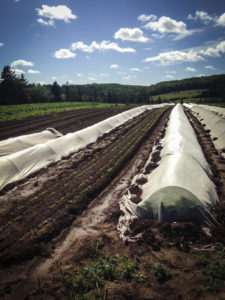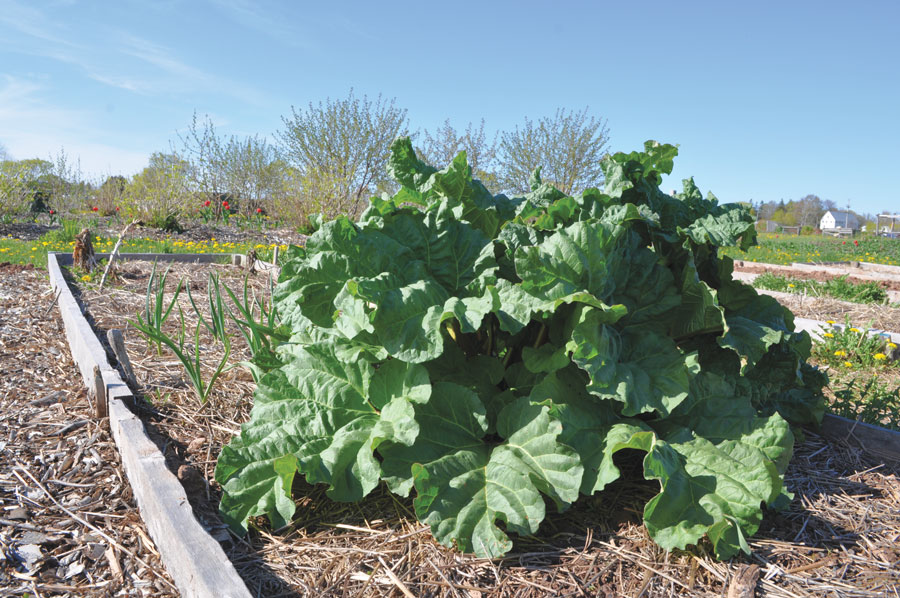Warmer days are here
Well, it was a bit of a late spring but mother nature is still with us and the weather continues to warm up. I just love being out in the garden. Don’t forget the your wide-brimmed hat or sunblock as the sun in June is certainly strong enough to give you a sunburn.
June is the month when you can plant tender vegetables that require more heat. Pumpkins, squash, cucumbers, and any of the melon family can be planted now. Sweet corn and everything else that you wish to plant in your garden can happen in June. You may also make a second planting of beans and peas too. The tomatoes and peppers that you have been nurturing indoors can go into the ground but leaving the trays of transplants outdoors for a few days before you put them in the ground will allow the plants to establish better. I just love the smell of my hands after I plant tomatoes. It reminds me of summer and a tomato sandwich on fresh homemade bread with a bit of mayo, salt and pepper, and a few leaves of basil if I’m really keen. Oh, I can just taste it now!
Perennials, like asparagus and rhubarb, are often the first fresh veggies to be ready. You have to take a longer-term approach with these plants as it will take a few years for these to grow and mature. Visit your neighbors and see if you can obtain some of these to plant, ideally getting them in the ground as soon as possible. If the weather cooperates, last month’s plantings of radish, leaf lettuce, and beet greens should be ready by the end of June. Freshly picked veggies have the highest nutrient content and flavours, and they are very healthy.
If your garden is fertile you will have some weeds emerging. Removing weeds early when they have weak roots is simpler and you can work up the row quickly. Keeping ahead of the weeds makes the job easier, which also helps with motivation, as weeding can be one of the least enjoyable elements of gardening. Place weeds in a bucket and remove from the garden, so there is no chance they will re-root. It is also very important to ensure that weeds do not go to seed in the fall. If you are having a major issue with weeds it may be beneficial to leave that area with nothing planted for one season. You just cultivate the area from time to time to remove the weeds and stimulate more weeds to germinate, thereby reducing the number of weed seeds in the soil.
Wild strawberries generally ripen the last week of June, so if you are looking for a break from weeding, take a stroll over to the edge of the woods and see if you can find any. They are small but pack powerful flavour and nutrition.
Insects are another category of pests that usually need to be managed in a garden. Some insects eat the tender seedlings as they are sprouting. If you densely plant seeds this may allow you to compensate for the ones that get eaten, just ensure you thin them out after they are well emerged to allow them the space to grow and mature. Also, some varieties have resistance to some pests so you may want to keep that option open. Some insects overwinter from the crop the previous year so moving the location of your garden from year to year can interrupt the life cycle and reduce insect numbers.

Row covers can be helpful in your garden
Floating row covers can be used to create a barrier that insects cannot penetrate. There are many types but generally these are a very fine plastic mesh that lay on top of the crop and can be used for multiple years. Keep an eye out for pests—you would be surprised what you see if you take the time to look. Early in the morning when you are enjoying your coffee, take a stroll out in the garden and carefully watch as you go along. You can see a small amount of damage or even see the pests flying about. Immature insects are easier to control compared to mature ones. If you have a small garden, sometimes it is practical to simply pick off the insects by hand. There are also things such as insecticidal soap or diatomaceous earth that can be sprayed on the crop and will deter insect pests.
If one pest in particular is troublesome, try to learn more about how to control that specific one. Carrot rust fly is one example. It is a weak flier so if you have the option to plant carrots in a windy area you are much less likely to have issues with the larvae in your carrots. There are many resources on the internet that give information on crop and pest biology so you may want to do some investigating and see what works for you.
Oh yes, if you haven’t put out your hummingbird feeders yet, please do it right away as the birds arrive around Mother’s Day and tend to nest close to a feed source. Happy gardening!
- THE EDIBLE GARDEN - June 2, 2020
- THE EDIBLE GARDEN - March 1, 2020
- THE EDIBLE GARDEN - February 1, 2020
- THE EDIBLE GARDEN - January 1, 2020
- THE EDIBLE GARDEN - December 2, 2019
- THE EDIBLE GARDEN - November 1, 2019
- THE EDIBLE GARDEN - October 1, 2019
- THE EDIBLE GARDEN - September 1, 2019
- THE EDIBLE GARDEN - August 1, 2019
- THE EDIBLE GARDEN - July 1, 2019


